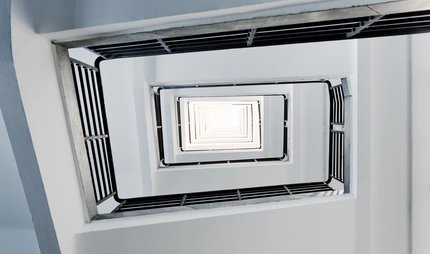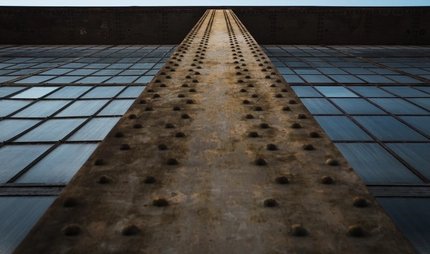
Siemens (made in Berlin)
A global corporation from the river Spree
In its long corporate history, Siemens has had many stations in Berlin - We invite you to take a journey to the beginnings of the global company.
Siemens - the name stands for German workmanship, precision and inventiveness. Today, the company is a global corporation, one of the largest companies in the field of electrical engineering - and an outstanding Berlin success story. Because it all starts here at the Spree, with a man who has many ideas and a lot of patience: Werner von Siemens.
He has made ("industrial") history at various locations in Berlin and has often shaped the city itself. Join us on a search for tracks to the beginnings of the global company Siemens.

Werner von Siemens - a Berlin inventor
When Werner von Siemens first came to Berlin in 1834, he was only 17 years old. For lack of money he has to bury his dream of studying at the Berlin Bauakademie, a former Technical University in Berlin. Instead, he attends the School of Engineering and Artillery in Berlin, a period which he later describes as "the happiest" years of his life. Afterwards he remains loyal to Berlin for the rest of his life.
The young man has many ideas. Although he serves full-time in the Prussian army in the 1840s, he still has enough free time to fiddle about - with his "invention speculations", as he calls them. He is particularly interested in communications technology. He succeeds in decisively improving the function of telegraphs. At the beginning of July 1847, a test of the new technology takes place on the above-ground test line between Berlin and Potsdam - the results are literally convincing. This is the starting signal for the founding of one of the largest German companies to date. But like all start-ups, the beginnings at Siemens are initially modest.

Kreuzberg - The beginnings of a global corporation
To get to the place where it all begins, you have to go to Kreuzberg, to Anhalter Bahnhof. In October 1847, Werner von Siemens and the precision mechanic Georg Halske found the Telegraphen-Bau-Anstalt von Siemens & Halske in a backyard in Schöneberger Straße, the foundation stone for the global Siemens corporation.
The house at number 19, in whose backyard the workshop was located, no longer exists. Today the elevator to the S-Bahn station "Anhalter Bahnhof" is located at this place.
Nevertheless, a trip to this point of the city is worthwhile, because here the success story of the Siemens company is reflected: about 50 years after Werner Siemens moved into the small workshop nearby, a new administration building was built at Askanischer Platz 3 between 1899 and 1901. A lot has happened in this half century, the importance of Siemens is expressed in a magnificent, neoclassical house facade. The building, which was rebuilt in a simpler form after the Second World War, today houses the editorial offices of the Tagesspiegel.
Around the corner, at Schöneberger Straße 3, you will find the former Siemens building from 1914/1915, which housed showrooms, representative meeting rooms and offices for the directors. The Mövenpick Hotel Berlin has been located here since 2004, but the historical details are still perceptible inside the building - for example in the Siemens Hall with its wood-panelled walls and fine furnishings. If you visit the hotel, you can also try out the restaurant in the historic inner courtyard.
But how did the backyard start-up for telegraph construction become a company with a representative building like Siemenshaus? The answer lies in a discovery by Werner Siemens that was to change both his company and his adopted city of Berlin forever.
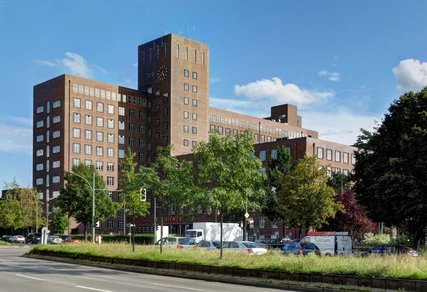
Electricity from Siemens - Basis for Berlin's path to the electropolis
The company Siemens and Halske is doing well right after its foundation. The telegraph construction business is up and running, in addition to the production of measuring instruments. Only five years after its foundation, the company moves within Kreuzberg in 1852 to Markgrafenstraße 94, where, in a former barracks, there is enough space for large workshops. (Unfortunately the original factory building is no longer preserved today).
The year 1866 marks an important turning point in the development of Siemens. Werner Siemens' discovery of the dynamoelectric principle heralds a change in the entire electrical industry. Electric current can now be produced more easily and cheaply than before. Electric light, electric motors and the world's first electric railway - Siemens' high voltage current makes it possible.
In 1881, the first electric tram, also a product of Markgrafenstrasse, starts operating in Groß-Lichterfelde. Siemens thus paved the way for Berlin's development into a modern metropolis - even though he himself did not live to see the Berlin elevated railroad put into service in 1902.
From the 1880s at the latest, the business grew rapidly, with nearly 900 people working for Siemens & Halske. Production splits up and cable production moves to the Salzufer in 1884 to Charlottenburg, where the company gradually concentrates its heavy-current production, e.g. the manufacture of dynamo machines.
The Kreuzberg plant continued to produce low-current equipment such as telegraphs, telephones, fire alarms and measuring instruments until 1905.
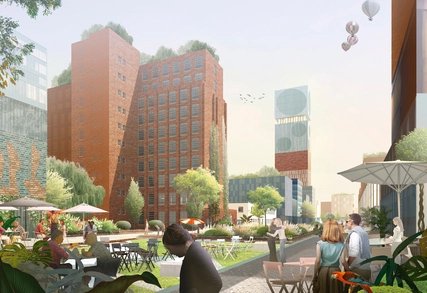
A separate district on the outskirts of Berlin
In the late 19th century, the success of Siemens & Halske continues unabated, with 3,000 people working for the company in the early 1890s. A further expansion of the production facilities is therefore inevitable. Werner Siemens dies in 1892, five years later the company, under the management of his son Georg Wilhelm, acquires an undeveloped area between Charlottenburg and Spandau, the Nonnenwiesen. Over the next decades, a separate district, Siemensstadt, is created here.
A walk through Siemensstadt shows how innovative engineering can go hand in hand with modern industrial architecture. The in-house architects Karl Janisch and Hans Hertlein built unmistakable monuments here in the first decades of the 20th century in the "Siemens style".
Take a stroll through the quarter and see architectural highlights such as the Schaltwerk high-rise, the first factory high-rise in Europe. In the Nonnendammallee you will find the administration building and the dynamo plant, at the Wernerwerkdamm you will find the Wernerwerk II.
At the beginning, only a few hundred people work at the new location in the far west of the city. But the more successful the company becomes, the more people are employed there. By the end of the 1920s, Siemens had over 65,000 employees. Reason enough for the Berlin city planning commissioner, Martin Wagner, to ask some of the most renowned modern architects to design a new housing estate. Greats such as Walter Gropius and Hans Scharoun designed buildings for Siemens employees, and the result is the Siemensstadt housing estate, now a UNESCO World Heritage Site.
Hardly any other Berlin foundation is as successful as Siemens. With its inventions, the company shapes life in the city. Both in the past, when it changed telecommunications, mobility, electric light and household appliances forever, and in the future: Siemens wants to convert its tradition-rich location in Spandau into a campus of the future by 2030 and also support start-ups there. This closes the circle of a company that began in a Kreuzberg backyard.
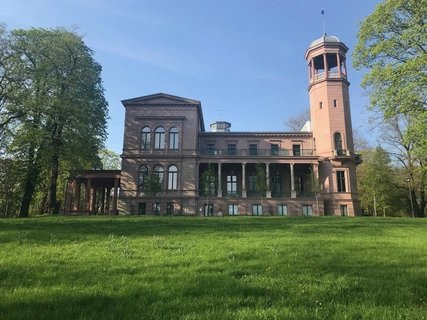
Tips from visitBerlin
If you are interested in the technical inventions and company history of Siemens, then pay a visit to the Siemens Archive at Nonnendammallee 101. After registering, you can take part in a guided tour there and, for example, view replicas of the pointer telegraph constructed in 1847 and the "Electric Victoria" (the first Siemens electric car built in 1905).
Also exciting is a visit to the Marzahn district of Biesdorf. Here stood an airship hangar built in 1911 by Siemens-Schuckertwerke. In Schloss Biesdorf, the former Siemens villa of the company founder Werner von Siemens, you will find changing exhibitions as well as a permanent exhibition on the eventful history and unique architecture of the building and its reconstruction.
After visiting the exhibitions in Biesdorf Castle, it is worth stopping in the pretty café to enjoy home-baked cakes and tarts and fresh coffee specialities, and then continuing on to the Wuhletal hiking trail, the Gardens of the World or the old village of Marzahn.

